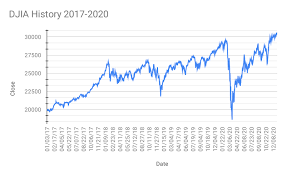The stock market is a platform where investors buy and sell shares of publicly traded companies, driving economic growth and wealth creation. At its core, it operates on supply and demand, with prices fluctuating based on company performance, investor sentiment, and macroeconomic factors. Key terms like *indices* (e.g., S&P 500, NASDAQ) track market trends, while *market cycles* (bull and bear markets) define periods of growth or decline. For beginners, grasping concepts like dividends, liquidity, and market capitalization is essential. By understanding these fundamentals, investors can make informed decisions and build a solid foundation for long-term success in the stock market.

Key Factors Influencing Stock Prices: Economic Indicators, Company Performance, and Geopolitical Events**
Stock prices are shaped by a mix of macroeconomic trends, company-specific data, and global events. Economic indicators like GDP growth, unemployment rates, and inflation directly impact investor confidence. For instance, rising inflation may prompt central banks to hike interest rates, affecting borrowing costs and corporate profits. Company earnings reports, debt levels, and innovation also drive valuations. Geopolitical risks—such as trade wars, pandemics, or conflicts—can trigger volatility. In 2023, investors must monitor Federal Reserve policies, corporate ESG (Environmental, Social, Governance) initiatives, and supply chain resilience to anticipate stock market movements and optimize their portfolios.
Why Diversification is Key to Minimizing Risks in Your Stock Portfolio**
Diversification is a cornerstone of risk management in the stock market. By spreading investments across sectors (e.g., tech, healthcare, energy), asset classes (stocks, bonds, ETFs), and geographies, investors reduce exposure to single-point failures. For example, a tech stock slump could be offset by stable returns from utility stocks or bonds. Index funds and mutual funds automate diversification, offering broad market exposure. In 2023, consider balancing traditional equities with emerging markets or renewable energy stocks to hedge against volatility. Remember, diversification doesn’t eliminate risk, but it mitigates the impact of downturns, ensuring your stock portfolio remains resilient.
Risk Management Techniques: How to Protect Your Investments with Stop-Loss Orders and Hedging**
Effective risk management safeguards your stock market investments from unexpected downturns. Tools like *stop-loss orders* automatically sell a stock when it hits a predetermined price, limiting losses. For instance, setting a 10% stop-loss on a $100 stock triggers a sale at $90. Hedging strategies, such as buying put options or short-selling, offset potential losses in a declining market. Additionally, maintaining a cash reserve allows you to capitalize on buying opportunities during corrections. In 2023, rising interest rates and geopolitical tensions make risk management vital. Combine these techniques with regular portfolio reviews to stay ahead in the stock market.
Long-Term vs. Short-Term Investing: Which Strategy Suits Your Financial Goals?**
Your investment horizon determines whether long-term or short-term strategies align with your stock market goals. *Long-term investing* (buy-and-hold) focuses on compounding returns over decades, ideal for retirement funds. Blue-chip stocks like Apple or Coca-Cola historically deliver steady growth. Conversely, *short-term trading* (day trading, swing trading) capitalizes on price fluctuations, requiring constant market monitoring. While potentially lucrative, it carries higher risks due to volatility and transaction costs. In 2023, hybrid approaches—like holding growth stocks long-term while trading sector-specific ETFs short-term—are gaining traction. Assess your risk tolerance, time commitment, and financial objectives to choose the right stock market strategy.
How to Analyze Stock Market Trends for Better Investment Decisions**
Stock market analysis falls into two categories: *technical* and *fundamental*. Technical analysts study price charts, moving averages, and indicators like RSI (Relative Strength Index) to predict trends. For example, a “golden cross” (50-day moving average crossing above 200-day) signals a bullish trend. Fundamental analysts evaluate financial metrics—P/E ratios, revenue growth, debt-to-equity ratios—to assess a company’s intrinsic value. In 2023, combining both methods is critical. Use tools like TradingView for charting and Yahoo Finance for earnings reports. Staying updated on sector trends (e.g., AI, clean energy) also enhances stock market decision-making.
The Role of Technology in Modern Stock Market Investing: AI, Algorithmic Trading, and Robo-Advisors**
Technology has revolutionized stock market investing. AI-driven platforms analyze vast datasets to predict price movements, while algorithmic trading executes orders at lightning speed based on predefined criteria. Robo-advisors like Betterment or Wealthfront automate portfolio management, offering low-cost, diversified investments tailored to your risk profile. In 2023, blockchain and NFTs are also influencing markets, enabling tokenized assets and decentralized trading. However, reliance on technology requires caution—algorithmic errors or data biases can trigger flash crashes. Embrace tools like AI stock screeners or sentiment analysis apps, but pair them with human judgment for balanced stock market success.
Common Mistakes to Avoid When Investing in the Stock Market**
Even seasoned investors make mistakes. Emotional trading—like panic-selling during a crash or FOMO (fear of missing out) buying—often leads to losses. Overtrading racks up fees and taxes, eroding returns. Ignoring diversification or failing to research stocks (e.g., meme stock hype) are other pitfalls. In 2023, avoid chasing “hot tips” from social media; instead, rely on verified data. Additionally, neglecting to rebalance portfolios or account for inflation can derail long-term goals. Learn from historical blunders, like the 2008 housing crisis or the 2020 oil price collapse, to refine your stock market strategy.
Top Stock Market Strategies for 2023: Dollar-Cost Averaging, Value Investing, and Growth Stocks**
2023 demands adaptive strategies. *Dollar-cost averaging* (investing fixed amounts regularly) reduces timing risks—ideal for volatile markets. *Value investing* targets undervalued stocks with strong fundamentals, like banks or industrials, while *growth investing* focuses on high-potential sectors like AI or biotech. ESG investing is also surging, aligning portfolios with sustainability goals. For passive investors, low-cost index funds mirror market performance. Active traders might explore options trading or sector rotation based on Fed policy changes. Tailor your approach to macroeconomic trends, such as supply chain shifts or energy transitions, to thrive in this year’s stock market.

Navigating Market Volatility: Tips to Stay Calm and Profitable During Turbulent Times**
Volatility is inherent to the stock market, but 2023’s mix of inflation, geopolitical strife, and tech disruptions amplifies it. Stay calm by focusing on long-term goals rather than daily swings. Use volatility to buy quality stocks at discounts—Warren Buffett’s “be fearful when others are greedy” mantra applies. Hedge with gold, bonds, or defensive stocks (utilities, healthcare). Stay informed via reliable sources like Bloomberg or Reuters, and avoid knee-jerk reactions. Tools like volatility index (VIX) trackers help anticipate turbulence. Remember, historically, markets recover—patience and discipline are your best allies in the stock market.
Conclusion**
Mastering the stock market in 2023 requires a blend of education, strategy, and adaptability. From understanding basics like diversification and risk management to leveraging AI tools and navigating volatility, informed decisions drive success. Whether you’re a long-term investor or an active trader, aligning your approach with current trends—ESG, algorithmic trading, hybrid strategies—ensures relevance. Avoid common pitfalls, stay updated on economic shifts, and maintain emotional discipline. The stock market remains a powerful wealth-building tool, but its complexities demand respect. By applying these insights, you’ll be better equipped to capitalize on opportunities and secure your financial future.
FAQs
What is the stock market?**
The stock market is a platform where investors trade shares of public companies, facilitating capital growth and economic activity.
How do I start investing in the stock market?**
Open a brokerage account, research stocks or ETFs, and begin with small, diversified investments.
What is diversification?**
Spreading investments across sectors/asset classes to reduce risk exposure.
What’s a stop-loss order?**
A tool that automatically sells a stock if its price falls to a set level, limiting losses.
Should I invest for the long or short term?**
Depends on goals: long-term for stability, short-term for quick gains (higher risk).
What are blue-chip stocks?**
Shares of large, stable companies with a history of reliable performance (e.g., Microsoft).
How does inflation affect the stock market?**
Rising inflation can lower corporate profits and lead to higher interest rates, impacting stock prices.
What is dollar-cost averaging?**
Investing fixed amounts regularly to reduce the impact of market timing.
Are robo-advisors safe?**
Yes, they use algorithms to manage portfolios, but ensure the platform is reputable.
How do I handle stock market volatility?**
Stay calm, focus on long-term goals, diversify, and avoid impulsive decisions.